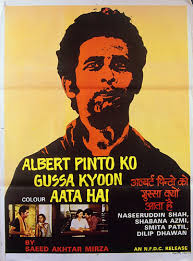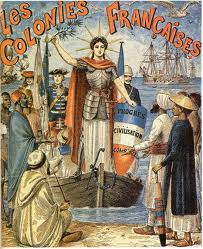You already know that the
recently concluded
Thinkfest, organized by
Tehelka, was partly
in the news for the wrong reasons. In addition to being hosted by alleged violators of the
coastal zone regulations, and being backed by mining interests, serious charges
had also been brought against the editor of Tehelka, Mr. Tarun Tejpal.
One of
these charges was brought by an anti-mining activist, Mr. Hartmann de Souza,
who alleged that
Tejpal had deliberately silenced a critical story on the illegalities involved in Goa’s mining industry. Subsequently, Tejpal got into
trouble for
making a suggestion that when people come to Goa, in this case
guests at the Thinkfest, high on their priority was engaging in sexual and
other sensorial excesses.

Tejpal responded to Mr. de Souza
in a profoundly insulting riposte in the Hindustan Times, attempting to deny
the charges of silencing the mining story; and denied the charges regarding his
statement at the Thinkfest. In his
rebuttal, de Souza piled one fact upon
another to demonstrate the hollowness of Tejpal’s defence. One came away from
reading de Souza’s response to acknowledge that there was indeed something
sticky about Tejpal, Goa and the mining issue. What this systematic destruction
of Tejpal’s fig leaf left untouched however, was the colonial thinking that
Tejpal had demonstrated in his response to de Souza, and which seems to have
manifested itself in his alleged statement at the Thinkfest.
 Tejpal’s response
Tejpal’s response to de Souza
commenced with the title ‘
Albert Pinto
ko gussa kyon aata hai’ (What makes Albert Pinto angry?). For those not in
the know, the title refers to the
1981 film by
Saeed Mirza featuring the
socio-political dilemmas that face a young working-class Catholic man in midst
of the socio-economic turmoil of Bombay in the 1970’s and 1980s. Interestingly,
while
the film itself offers a critical and sympathetic look at a subalternsocial group that in addition to being a religious minority was further
marginalized economically and politically, Tejpal’s title does the opposite. If
there is a link to Bollywood in Tejpal’s title, then it is to the ‘Anthony
Gonsalvez’ from the film ‘Amar, Akbar, Anthony’ (AAA). If Mirza’s film paints a
realistic likeness of a community, AAA paints the Indian west-coast Catholic
into a caricature. This caricature is not unfamiliar to us, Bollywood repeatedly casts, dismissively, the Goan-East-Indian communities as jolly (read alcohol-charged) fellows, ready for the
singing and dancing. One cannot really expect them to mount a serious argument,
and they are at best given to spontaneous bursts of emotion; like children
really.

This reading of Tejpal’s title is borne out by the manner in which
he structures his response, where he rebuts every allegation, only by mocking
de Souza’s alleged inability to follow an argument, or his alleged collapse into
hysterical anger. The underlying message of Tejpal’s response is unmistakable;
you can’t take this de Souza fellow seriously, discussing with him being an experience akin to arguing with a
child (or a drunk). This was a colonial tactic too. The white-man assumed a
colonial burden of educating the childlike noble savages into civilization, and
the techniques of democratic governance.

Tejpal then takes up another
technique used by the white man in his colonial drive. One of the
justifications for colonialism was the inability of the colonized native to
effectively harness the resources of the locations they lived in. The colonizer
was effectively doing them a favour by effectively exploiting the local
resources for development. Tejpal informs us in his response to Mr. de Souza
that “the house we bought was an old ruin in an inner village”. In his rejoinder
to this riposte, de Souza informs us that there were also words like “I mean,
look at Moira man, it’s a dying Goan village”. Tejpal would perhaps prefer if
we did not rely on de Souza’s version of the conversation between the two of
them, but it does not change the way in which we read Tejpal and his statement.
The point of Tejpal’s argument is clear, he is doing Goa and Goans a favour by
buying an ‘old ruin’ that Goans themselves (shame on them) do not value, and he
is going to breathe life into it. Could the colonial logics be any clearer? The
colonial master values (the delicate Goan architecture) what the local savage
(the Goan so blindly destroying his own culture) does not.

This logic of saving has been a
part of the rhetoric of a good number of those who come into Goa buying Goan
property, and oftentime home-bred Goans themselves. To make this argument is to fail to see the complex mix of reasons, the socio-economic and political reasons,
why Goan homes are being pulled down. To blame the Goan is all too easy, but
then this easy response is part of the colonial technique of simplifying
matters so that the more complex argument brought on by the colonized seem like
misplaced anger, and blind stupidity. We should not forget the histories of other colonized places, where impoverished persons of the local communities (be they the First Nations of America, or the adivasis of Central India, the aborigines of Australia) were first impoverished, and then made to sell to the colonizer what they would not have contemplated selling before. This process of impoverishment, and forced selling of livelihood and history, is not uncommon even today in large parts of India, not least in Central India.

Tejpal does not see himself as
part of a colonial machinery. After all how could he, given that he sees
himself as the good guy fighting against the evil forces of corporate greed.
But perhaps Tejpal has not followed his own logic carefully. In his response he
indicated that he pleaded with de Souza to make space for ‘complexity, in an
intricately intertwined world.’ If we acknowledge this intricate intertwining
that Tejpal suggests, then we must also acknowledge that while we fight the
good fight elsewhere, we are also implicated in the evil conquests elsewhere.

The problem with the left-leaning
Indian liberal is that they do not realize that they are as Indian as the
Indians they fight on other fronts. Despite their battles, they share many
traits of an Indian-ness, and they too are engaged in an Indian national
project, though they differ on the tiny details of this project’s agenda. And
so it is, when de Souza protests against the kind of colonial enterprise that
Tejpal is associating with in the Goan context, Tejpals suggests that ‘I
suspect, for him if it isn’t Goa it doesn’t count.’ What is this if not the
kind of charge of anti-nationalism that gets leveled against all those who
protest against the excesses of the Indian Union’s colonial project, whether it
is in the mountains of Kashmir, the jungles of Jharkhand, or the banks of the
Brahmaputra? Tejpal leveled this charge against de Souza three times, ignoring
the personal history of a man, committed to another kind of Indian-ness.

The Indian left-liberal may oppose
Hindu fundamentalism, but this is largely because they don’t like this
‘return-to-the-Vedas’ kind of Brahmanism that the RSS pushes. On other fronts,
they will push their own particular brand of Brahmanism, a form that Pandit
Nehru was particularly fond of. One could call this, ‘playing the white man’.
On the one hand Kashmir is important because it stresses our Aryan roots, on
the other hand Goa is important because as long as they continue to keep up
this ‘piece-of-Europe-in-India’ story, they can continue to pretend they are
white people. Let us not forget the alacrity with which the former play-spaces
of the white masters were taken over by the post-colonial Indian babu; from
Lutyen’s Delhi, to the Himalayan and other hill-stations, Pondicherrry, and
Goa.

In light of the colonially loaded
sub-text of Tejpal’s response to de Souza, one should not be surprised if Tejpal
did indeed make those vile remarks in the course of the Think Fest. But we
would do ourselves an injustice if we restricted our gaze to Tejpal alone. The
larger issue is that there are so many Tejpal’s out there, busy pushing a
contemporary colonial agenda. These Tejpals exist both within the ranks of the 'insider' as they do within the 'outsider'. The issue is, what do we do about them?
(A version of this post was first published in the Gomantak Times 16 Nov 2011)



No comments:
Post a Comment